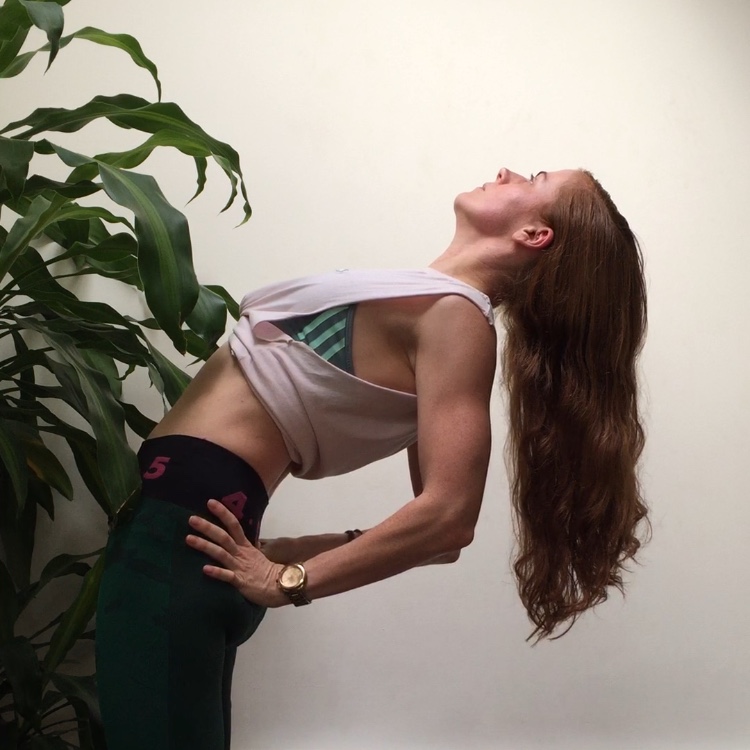Breathing in backbends
Olivia Marley
We’ve started 2019 by focusing on breath, and in particular on the breathing technique called Ujjayi (slow and steady rhythm, with a slight sound in the back of your throat). As my students become more proficient in maintaining that breath, I’ve started to test them by bringing in poses that can be hard to breath in. Among those: backbends.
When you bend backwards, the back side of your body contracts to bring you into that shape (in the same way as when the front side of body contracts it makes you bend forward). There are three main reasons why I think I - and the people I observe in my classes - can find it hard to breathe in these types of postures.
Imagine yourself lying on your front and then doing locust pose/ shalabasana or cobra pose/ bhujangasana. The back side of your body contracts to bring you into that shape, but the front side of your body is pressed against the floor. So it can feel like there isn’t much room for your breath to expand in your body
In some other backbends you’re not pressed against the floor but the posture itself is a bigger, more demanding shape. So imagine yourself in perhaps camel pose/ ustrasana or upward facing bow pose/ urdhva dhanurasana. The backside of your body is contracting to bring you into the shape, but the front side might be being so stretched that again it may feel like there’s not any available space for your body to expand when you want to inhale
And lastly, consider the backbends in that short sequence we do over and over again in vinyasa yoga (plank -> lower down -> upward dog, locust, cobra or sphinx -> downward dog). It’s really common to take that backbend too fast, rather than making it last the entire length of a slow inhale.
So out of these, the third has the most obvious solution. Even though it takes way less strength to rush through that sequence quickly, slowing everything down will give you time to breathe in an unhurried way.
The first reason - feeling squashed against the floor - for most people just takes a bit of attention to solve. Even though your belly stays on the floor in those face down backbends your chest lifts. And your breath doesn’t just expand into the front and back of your body, but also the sides. So intentionally directing your breath into your chest and the sides of your ribs (while also moving slowly enough to give yourself time to take a full inhale) should help solve that issue.
So that brings us to the remaining problem of being in such a demanding shape that you can’t help holding your breath. In a discipline that sometimes mistakenly prioritises range of motion over integrity of motion and breath this might seem unsolvable. When in fact it’s super simple. Don’t go so far!
If you’ve practised yoga for a while you’ve more than likely done it: wanted to make a shape with your body so you’ve pushed beyond where you should have. But one of the key features that differentiates this practice from other movement disciplines is mindfulness and breath. If you find yourself in a backbend (or any other posture) and you can’t breathe steadily, try easing out a little. So in the photo above I could go a bit further into the shape but I’d start to find it hard to breathe. Someone else would hit that point in a different place to me, but the same rules still apply no matter what the shape... if you can’t breathe you’ve gone a bit far 🤷🏻♀️

